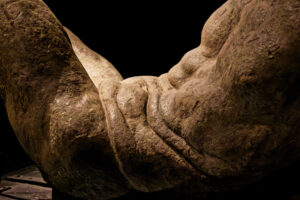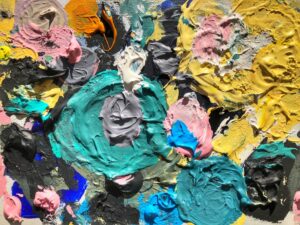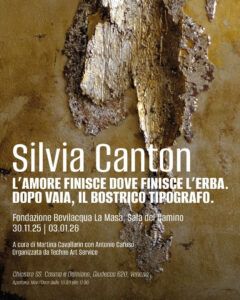In the fascinating world of art, you are confronted with multiple and varied forms of expression. Art brut, developed by artists outside the mainstream, challenges traditional aesthetic norms, offering visual experiences that escape the preconceived rules. In this article, you will explore how this unique art form breaks conventional barriers, unleashing creativity in unexpected and engaging ways. Prepare to discover a universe where authenticity and instinct prevail over technique and perfection.
Definition of art brut
Art brut’, a term coined by French artist Jean Dubuffet, refers to works of art created by self-taught artists, often outside traditional academic and commercial circles. These works challenge aesthetic conventions, expressing the authenticity and spontaneity of human experience, freeing themselves from technical and stylistic constraints. In this way, Art Brut stands as a pure form of creative expression, inviting reflection on the true emotions and perceptions of individuals.
Origins and History
Art Brut originated in the 1940s, when Jean Dubuffet met untrained artists and people interned in psychiatric institutions who produced authentic and original works of art. Dubuffet began to collect these works in order to promote an alternative vision of art, free from the aesthetic criteria of galleries and museums. This current is rooted in a desire to valorise innate and spontaneous creativity, rather than that proposed by masters and established artistic movements.
Fundamental Principles
The fundamental principles of Art Brut are based on authenticity, freedom of expression and rejection of traditional artistic conventions. The artists of this current focus on their personal experience, often drawing on the unconscious and deep emotions. This leads to singular creations that do not follow established rules, but are strongly influenced by the experiences of their authors, bringing to light the most authentic side of human creativity.
These principles represent a form of rebellion against established aesthetic norms, revealing an art that goes beyond mere technical skill. In this way, Art Brut offers a new perspective on aesthetics, questioning what we consider beautiful or meaningful. It is an art that invites us to explore subjectivity and the value of individual experience, pushing each artist to express his or her truth without compromise.
Traditional aesthetic conventions
Traditional aesthetic conventions refer to those principles and standards that have guided art for centuries. These standards determine what forms, colours and techniques are considered ‘acceptable’ or ‘beautiful’, influencing how both artist and audience perceive art. If you want to understand contemporary art, it is crucial that you recognise how these conventions can limit creativity and individual expression.
Artistic canons
Artistic canons are precise standards that define beauty and quality in a work of art. These criteria have been developed over centuries and reflect specific cultural and historical values. If you look at classical works of art, you will notice that they follow precise rules of proportion, balance and harmony, which strongly influenced the expectations of both artists and viewers.
Criticism and limits
Traditional aesthetic conventions are often subject to criticism, as they can limit the expressive freedom of artists. If you immerse yourself in the art world, you will notice that many artists find it restrictive to adhere to rigidly defined canons, choosing instead to explore more liberating forms of expression. This tension leads to a constant debate about the very essence of art and its purpose in society.
Criticism of the limits of traditional aesthetic conventions focuses on their tendency to exclude voices and styles that do not conform to predefined canons. This exclusion not only reduces variety in art, but also hinders cultural progress. When artists, such as those practising brut art, reject these norms, they defy not only public expectations, but also the very definition of what art can be. Therefore, it is crucial that you consider how these conventions may influence your perception of art and the value you attach to different art forms.
Art brut as a manifestation of creative freedom
Art brut, through its authenticity, represents a true liberation of artistic expression. Authors of this movement, often outside traditional cultural and educational influences, create works that reflect their true essence. Here, it is not about conforming to aesthetic standards, but about freely exploring one’s own emotions and worldviews. This unconventional approach invites you to re-discover the meaning of creativity, making it accessible to anyone who wishes to express themselves.
Personal expression
In art brut, personal expression is at the heart of every work. Each artist communicates his or her own unique experience, revealing thoughts, emotions and perspectives that might go unheard elsewhere. Through these works, you can get in touch with the vulnerability and strength of those who have chosen to express themselves without filters, showing that art can be a powerful tool for personal and authentic communication.
Rejection of regulations
The rejection of stylistic norms and traditional rules is one of the fundamental pillars of art brut. Artists abandon the need to follow pre-established aesthetic canons, allowing innovative forms and techniques to emerge. This rejection is not only a matter of clashing with academic art, but also represents an act of rebellion against the limitations imposed by society. In this way, art brut not only celebrates the uniqueness of the artist, but also invites you to reflect on the conventions you might follow in your creative life.
The influence of art brut on contemporary art
Art Brut has had a significant impact on contemporary art, breaking down barriers and stimulating new forms of expression. This movement has inspired artists to explore their creativity outside traditional conventions, leading to works that reflect authentic personal experiences. Through its unconventional approach, Art Brut invites you to re-evaluate what you consider art, broadening your aesthetic understanding.
Recognition and appreciation
Over the past decades, Art Brut has gained increasing recognition within the art market, with dedicated exhibitions and museums valorising this genre. This shift in perception invites you to consider artists long ignored, opening the door to greater inclusivity in the contemporary art scene.
Impacts on modern artists
Art Brut has influenced many modern artists, who draw inspiration from freedom of expression and self-taught techniques. These artists challenge artistic norms and try to express their inner experiences in new and innovative ways. You yourself may find an affinity with this freedom of expression, taking your art to new horizons.
Most contemporary artists find themselves incorporating elements of Art Brut into their work, embracing imperfection and spontaneity. This influence can manifest itself in your chosen techniques, materials and subjects, inviting you to reflect on how your art can be informed by personal experiences. With artists who value vulnerability as a strength, the message of Art Brut spreads, encouraging an ongoing dialogue about the importance of each individual’s unique voice in artistic creation.
Public perception
The perception of Art Brut plays a crucial role in the way it challenges aesthetic conventions. This art movement, with its instinctive and unconventional nature, invites you as a viewer to reconsider your ideas of beauty and value in art. Through works that often break traditional rules, Art Brut stimulates deep reflection on what it really means to be creative and how society defines art.
Reception of Art Brut
The reception of Art Brut has been varied, with reactions ranging from indifference to deep appreciation. Beginning as expressions of marginalised artists, these works challenge your understanding of creativity, pushing you to explore new narratives and emotions that are often overlooked in mainstream art circles.
Visual education and training
Education and visual training are fundamental to understanding Art Brut. By broadening your horizons through art history and theories, you can grasp the importance of this form of expression and its impact on contemporary culture. Delving into these aspects can give you a new perspective on Art Brut works.
Investing in your visual education and training allows you to fully appreciate Art Brut and its peculiarities. Through courses, exhibitions and targeted readings, you will have the opportunity to explore stories of artists working outside the traditional norms. This process will not only enrich your understanding, but also help you develop a critical and personal eye for the works, making you feel part of a broader dialogue about art and society.
How does art brut challenge aesthetic conventions?
In conclusion, art brut invites you to reconsider your preconceived ideas about art and beauty. By exploring works created outside of traditional artistic conventions, you realise that authenticity and personal expression can escape established norms, leading you to a deeper appreciation of human creativity. Through its characteristic break with art instruction and conventional materials, art brut challenges you to find value in imperfection and spontaneity, thus broadening your aesthetic horizon.



